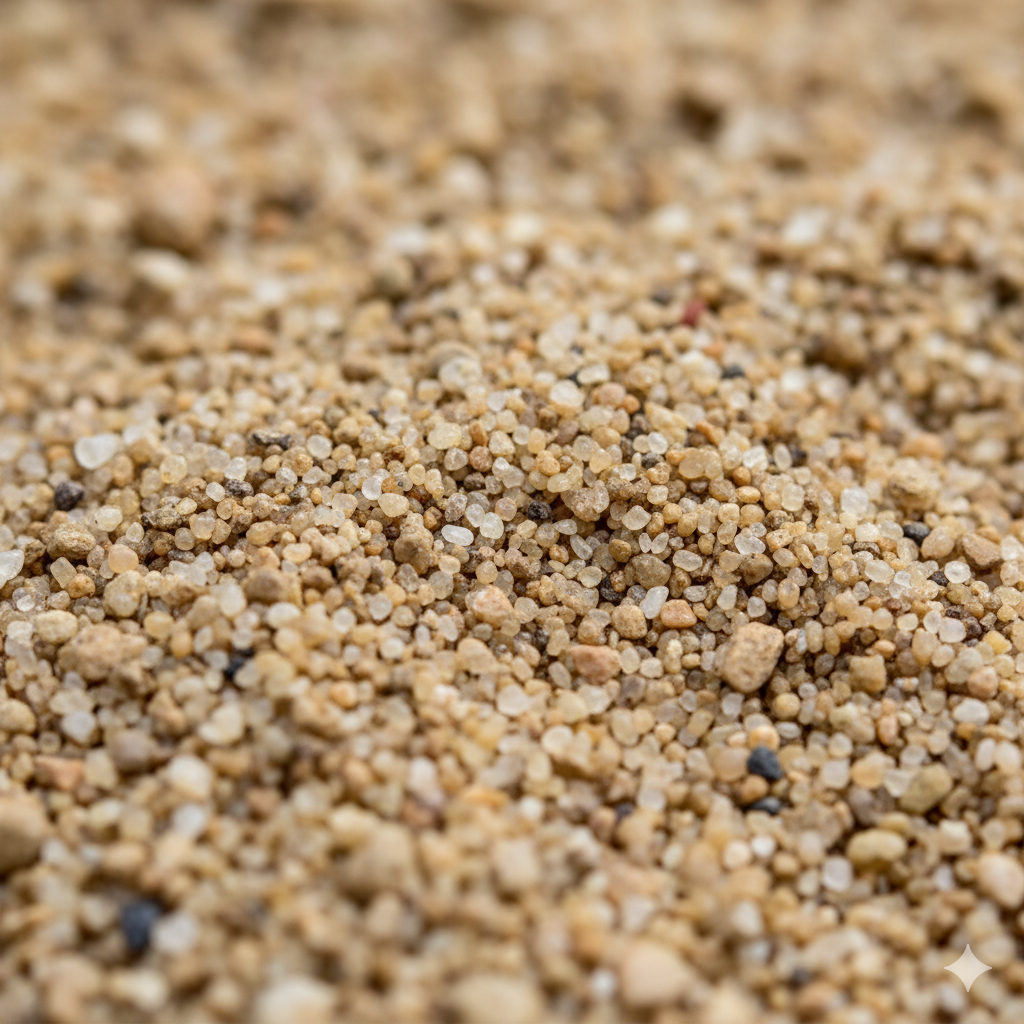Sandy Soil

Large particles with wide pores; drains very fast, warms quickly, and is easy to cultivate but holds little water and nutrients.
🧱 Texture, Drainage & Fertility
Texture: gritty, non‑cohesive
Drainage: very fast
Fertility: low
Organic Matter: low
Tendencies: droughty, low CEC (nutrient holding), prone to leaching
🧪 pH
Typical pH Range: 5.5–7.0 (often slightly acidic)
✅ Best Suited For
- Root crops (carrot, peanut)
- Mediterranean herbs (rosemary, thyme)
- Pineapple, cassava with feeding
⚠️ Not Ideal For
- Heavy feeders without frequent fertilization
- Water‑hungry leafy greens in hot/dry spells
🛠️ Amendments & Improvements
- Mix in large volumes of compost and coco coir to increase water holding
- Add biochar pre‑charged with compost tea to improve CEC
- Use slow‑release or split fertilization to reduce leaching
🪴 Recommended Container Mix
45% coco coir, 35% compost, 20% perlite/pumice; add polymer crystals or more coir in very hot balconies.
🔍 Diagnostics
Hand Test: Won’t hold shape; falls apart; no ribboning.
Jar Test: >70% sand layer; thin silt/clay layers.
🐛 Common Issues & Fixes
- Wilting between waterings: Increase organic matter; mulch thickly; consider wicking reservoirs in containers.
- Nutrient deficiency (yellowing): Use slow‑release fertilizers; add compost and biochar.
💡 Care Tips
- Water more frequently in smaller doses
- Use windbreaks to reduce evaporation
- Apply mulch 5–8 cm to moderate temperature swings
🌦️ Malaysia Notes
Frequent tropical showers can still leave sandy beds dry hours later; capture rainwater and irrigate in mornings.
Note
Use these profiles as practical guides. Local site conditions vary—observe water infiltration, plant responses, and adjust amendments accordingly.